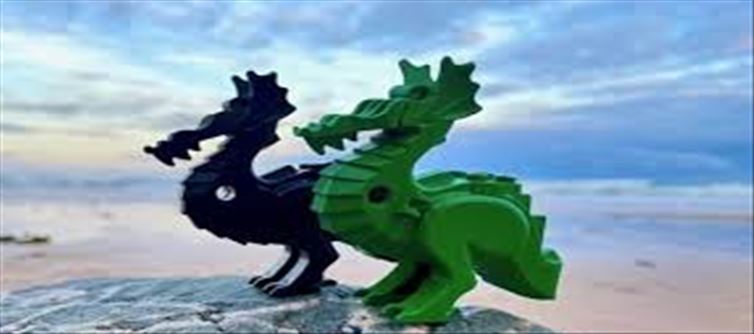
In 1997, a rogue wave caused the cargo ship Tokio Express to nearly capsize while transporting five million Lego pieces from Rotterdam to New York. The incident, known as the Great Lego Spill, resulted in the loss of all 62 shipping containers and is one of the largest toy-related environmental mishaps ever recorded. Remarkably, Lego pieces from the spill continue to wash up on shores even after 27 years.
Shortly after the accident, beachgoers in southwest england began finding a variety of Lego pieces, including plastic octopuses, spear guns, scuba tanks, cutlasses, flippers, and dragons. Tracey Williams, a beachcomber and environmental activist from Cornwall, has been documenting these discoveries on social media under the account name Lego Lost at Sea.
In one post, Williams shared a photo of a black Lego dragon, noting that out of 33,941 Lego dragons in the container, 33,427 were black and 514 were green. She discovered this piece near shells on a concrete slipway at Portwrinkle beach in Cornwall.
Williams’ finds led to the creation of a community dedicated to tracking down and documenting Lego pieces from the spill. Her facebook page, covered by the BBC, quickly garnered numerous submissions from people who had found colorful octopuses, life rafts, dragons, diving flippers, scuba tanks, and other items.
The initiative even inspired a book titled Adrift: The Curious Tale of the Lego Lost at Sea. A 2020 study published in Environmental pollution estimated that these castaway Legos could take nearly 1,300 years to fully degrade, based on X-ray fluorescence analysis of the Lego structure.




 click and follow Indiaherald WhatsApp channel
click and follow Indiaherald WhatsApp channel